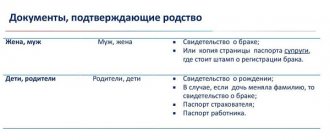1. History of the Declaration 2. What can we learn from the Declaration 3. Significance of the Declaration of the Rights of the Child Human relations have, over the course of time, come to be viewed in terms of legal aspects. International cooperation has had a significant impact on this process. Communication needs to be regulated, and therefore people enter into relationships controlled at the state level. Such a system is characterized by stability, which is maintained thanks to the established legal order. The rights of the child are also spelled out in legal law. One of the most important documents is the Declaration of the Rights of the Child. It is interesting to understand how it was created and what is reflected in it.
History of the Declaration and its definition
The International Declaration of the Rights of Children is an official document adopted by the international community, which sets out the responsibilities of an adult towards a child.
The first version of the Declaration was adopted in 1924. It consisted of five main points and provided for the protection of children from prostitution, trafficking and slavery. For the UN, this was a major advance in the transformation of international laws. But still minors needed more protection. Later, some improvements and changes were made to the Declaration.
The revised Declaration came into force in 1959. In the new version, there were more main points that protected the rights of children; they already affected many other areas. The measure of liability for violations was also prescribed.
Responsibility for violation
The Declaration of the Rights of the Child is not just a document. This is a way to independently protect minor children from the arbitrariness of adults. In Russia, there is a certain procedure for how a child can prevent the violation of his legal rights. There are territorial commissions, departments for juvenile affairs under the police, and guardianship authorities. All of these organizations can be contacted in case of violence or just a threat. They will definitely take action, as the law obliges them to do so. Institutions work in contact with each other, which increases the efficiency of actions.
Typically, children's rights are violated in the family and school. They are insulted, offended, forced to do backbreaking work. Moreover, the perpetrators themselves often do not realize their illegal actions.
Criminal liability will be incurred for illegal actions. If a minor complains about a violation of his rights to representatives of the guardianship authorities or to the police department, then they are obliged to respond to such a statement and ensure the protection of the minor citizen.
The state strictly monitors parents' compliance with their responsibilities towards their children. For failure to comply, deprives of parental rights. Outsiders can also respond. For example, if a child is placed in a dangerous job, the administration will be held accountable in accordance with the law.
Declaration and Convention on the Rights of the Child: differences
The Convention is a legal document, but the Declaration is not.
The Declaration provides for the same rights for all minors in upbringing, education, welfare, physical and spiritual development, and it does not matter what race the child is, what language he speaks, what religion he professes, etc.
Everything that is written in this declaration carries a call to parents, governments, and public organizations to respect and recognize the rights of children, as well as provide assistance in their implementation.
The Convention determines the will of minors to receive education, to spend rest and leisure, and to use other services of states that are members of the UN and have signed this document. This Convention is the first and main international legal document defining the rights of minors.
The convention was signed by all countries that are members of the UN, except the United States and Somalia.
The issue of human rights is of priority importance in the activities of the United Nations and UNESCO. For the first time in world history, the UN has developed documents that define fundamental human rights and freedoms, which are international standards. One such document is the Convention on the Rights of the Child, adopted by the UN General Assembly (resolution 44/25 of November 20, 1989), which entered into force on September 2, 1990.
The UN Convention on the Rights of the Child is an international legal document that defines the rights of children in member states. The Convention on the Rights of the Child is the first and main international legal document of a binding nature, dedicated to a wide range of rights of the child. The document consists of 54 articles detailing the individual rights of persons under the age of 18 (unless the age of majority is reached under applicable laws) to the full development of their capabilities in an environment free from hunger and want, cruelty, exploitation and other forms of abuse. The parties to the Convention on the Rights of the Child are the Holy See and all UN member countries except the United States, South Sudan and Somalia.
History of the development of documents on the rights of the child
The issue of children's rights was raised relatively recently. It was only as a result of democratic reform movements in the 19th century that states assumed responsibility for protecting the child from parental abuse and employer economic exploitation.
Children and their rights have been the focus of the UN since its creation in 1945. One of the first acts of the General Assembly was the formation of the United Nations Children's Fund (UNICEF), which is currently the main mechanism for international assistance to children.
The Universal Declaration of Human Rights, adopted by the UN in 1948, states that children should be the object of special care and assistance.
In 1959, the UN adopted the Declaration of the Rights of the Child. Her main thesis was that humanity is obliged to give the child the best of what it has. It sets out ten social and legal principles concerning the protection and well-being of children at the national and international levels. The Declaration called on parents, individuals, non-governmental organizations, local authorities and governments to recognize the rights and freedoms set out in it and to strive to respect them. The Declaration also stated that children should be provided with special protection and opportunities and conditions that enable them to develop in a healthy and normal manner, in conditions where their freedoms are respected and their dignity is respected. This document has had a significant impact on the policies and practices of governments and individuals around the world.
However, the need soon arose to adopt a new document - a convention. International documents, including those on human rights, can be conditionally divided into two large groups: declarations and conventions, and if a declaration (from Latin - proclamation) is not binding, being a recommendation in which the basic principles and program provisions are proclaimed, then a convention (from Latin - treaty, agreement) is an agreement on a special issue that is binding for those states that have joined (signed, ratified) it.
Over the 30 years of existence of the Declaration of the Rights of the Child, many ideas have changed, new concepts have emerged, therefore the convention defining the rights of children covers a wider range of issues. The need to give children's rights the force of treaty law became particularly acute during the preparations for the International Year of the Child, celebrated in 1979. For ten years, from 1979 to 1989, the Commission on Human Rights, whose work was attended by lawyers, doctors, teachers, psychologists, sociologists, cultural experts, leaders of public organizations and religious denominations from many countries around the world, developed this project.
Compared to the 1959 Declaration of the Rights of the Child, which had 10 short, declarative provisions (they were called principles), the convention consists of articles that take into account almost all aspects related to the life and position of a child in society. The Convention on the Rights of the Child not only develops and specifies the provisions of the Declaration of the Rights of the Child, but also goes further, stating that states that accede to it are legally responsible for their actions towards children.
The Convention is of equal importance to peoples in all regions of the world. This is the result of long and fruitful negotiations between representatives of countries of different socio-economic systems, ethical and religious approaches to life in the development of a set of common values and goals that have universal application.
Although the Convention sets general standards, it takes into account the different cultural, social, economic and political realities of individual States, allowing each State, on the basis of rights common to all, to choose its own national means for implementing these standards. This gives grounds to assert that the Convention has a universal character.
Speaking about the history of the Declaration and the Convention, one cannot help but recall the name of a prominent domestic teacher, an active fighter for children’s rights and free education of the individual, K.N. Wentzel. Based on humanistic philosophical thought, back in September 1917 he developed and published the Declaration of the Rights of the Child. This unique humanistic manifesto was one of the first in world practice, which was several decades ahead of a similar UN Declaration.
The international community has praised the Convention as an outstanding humanistic document of our time. The UNICEF Executive Council at its annual session (June 1992) invited states to celebrate World Children's Day on November 20 (the day of adoption of the Convention on the Rights of the Child) every year.
The Convention is a document of the highest pedagogical significance. She calls on both adults and children to build their relationships on moral and legal standards, which are based on genuine humanism and democracy, respect and careful attitude towards the child’s personality, his opinion and views. They should be the basis of pedagogy, education and the decisive elimination of the authoritarian style of communication between an adult and a child, a teacher and a student. At the same time, the Convention affirms the need to develop in the younger generation a conscious understanding of the laws and rights of other people, and a respectful attitude towards them.
The main idea of the Convention is the best interests of the child. Its provisions boil down to four essential requirements that must ensure the rights of children: survival, development, protection and ensuring active participation in society.
The Convention affirms a number of important social legal principles, the main one of which is the recognition of the child as a full-fledged and full-fledged person. It is a recognition that children should have human rights in their own right, and not as an appendage of their parents or guardians.
Currently, 96% of the world's children live in states with a legal obligation to protect children's rights.
The text of the Convention on the Rights of the Child can be found on the official UN website.
Basic principles
The Declaration on the Rights of Minors contains ten basic principles:
- All minors should have equal rights regardless of any circumstances , for example: gender, race, religion, etc. Such equality must be supported and protected by the laws of all countries.
- All children have the right to moral and physical self-development . No one has the right to embarrass their dignity.
- Children have the right to receive citizenship of the country in which they were born and the name given by their parents . Parents or guardians must take steps to register and receive documents for the newborn child.
- All children have the right to health and social services from birth . Medical services also include monitoring the child’s mental state.
- A physically or mentally handicapped child, no matter whether he was born this way or became this way during his lifetime, should be provided with both psychological and material assistance..
- A child should be surrounded by the love and care of his parents, regardless of his citizenship. And also care should be shown on the part of the state in which the minor lives.
- Children have the right to develop and learn . For this reason, any government must ensure that they are able to obtain free education. Parents are required to organize training.
- The child comes first . Providing assistance to a minor in any situation is a priority.
- The right of minors to immunity from elders . Children must be protected from cruelty in its various forms. The educational process should be carried out using methods of persuasion and explanation.
- Every child should have the right to a peaceful life . Children should not be instilled with a feeling of hostility towards other races or people of other social groups. Everything should be based on humanity and mutual understanding towards the people around us.
Contents of the Declaration
The main provision of the adopted Declaration was that “humanity is obliged to give the child the best that it has.”
The document proclaimed 10 social and legal principles relating to the protection and well-being of children at the international level. For the first time, it was noted that caring for children and their protection are more the exclusive responsibility of the family and even of an individual state. All humanity must care about protecting the rights of children.
The developers of the Declaration determined the responsibility of persons who should provide, teach, and educate minors, but do not do so. The 10 principles reflect the main responsibilities of adults to children.
1st principle
. All children have equal rights with their peers, which cannot be infringed, reduced or abolished altogether.
2nd principle
. Every child has the right to his own dignity and the opportunity to develop morally, physically and spiritually.
3rd principle
. The state is obliged to provide children living on its territory with citizenship, and parents are obliged to give them a name.
4th principle
. Children have the right to social care and medical support, which should be provided to their mother during pregnancy and the postpartum period. Every child has the right to housing and food. The Declaration characterizes school age in great detail. In addition, the need for constant monitoring of the condition of children, especially from disadvantaged families, is explained.
5th principle
. Children with disabilities (physically or mentally) must be provided with special care and attention.
6th principle
. Every child has the right to love from his parents and the state of which he is a citizen.
7th principle
. All children are provided with free education. They have the right to play and develop. Parents must teach them responsibility and usefulness to their society.
8th principle
. The rights of the child are defined as paramount in the ability to receive help.
9th principle
. The Declaration protects children from abuse and exploitation. The child should not be involved in work that is harmful to his development and emotional stability. Force should not be used on children.
10th principle
. Every child has the right to a peaceful life in which adults, in particular parents, teach him care and mutual understanding.
Violation of basic principles of children's rights
Most often, violations occur within the family. When raising children, many parents scold their children and use physical measures, not only secretly, but also in front of people.
This may be the norm for some in the educational process, but in fact such actions are a violation of the law and the rights of the child. Such punishments, which look not only as a physical measure of influence, but also as moral suppression, can be used by educators in preschool institutions and teachers in schools for educational purposes.
The child suffers from such methods and should receive protection from the law.
Violation and liability
There are also territorial commissions in our country. These organizations interact with each other. They take certain preventive measures against minors. In most cases, the violators are not only the family, but also the preschool institution and school.
They can humiliate, insult, beat children, and often force them to do all the dirty work.
Expert opinion Maria Lokshina Family law expert since 2010
The state provides for the protection of children's rights from despotism and the arbitrariness of adults. We are talking not only about problem parents, but also about educators, teachers, teachers.
Not everyone knows that there is responsibility for violating children's rights. It can be administrative and even criminal.
If a child complains to representatives of the guardianship authorities or the police, then government agencies that are called upon to protect minor citizens of our country will definitely respond to the alarm. If facts confirming illegal actions are revealed, a criminal case will be opened against the violator.
Dear readers, the information in the article may be out of date, take advantage of a free consultation by calling: Moscow +7
, Saint Petersburg
+7 (812) 425-62-38
Socialization and benefits
The Declaration establishes the requirement that from birth a person should have the right to a nationality and a name. The minor must be provided with social security benefits. The child has the right to healthy development and growth. For this purpose, special protection and care (prenatal and postnatal as well) must be provided to both him and his mother. A minor has the right to adequate housing, food, medical care and entertainment. The Declaration of the Rights of the Child establishes the requirement that socially, mentally, and physically disabled citizens under 18 years of age must be provided with special care, care and education necessary due to the characteristics of their condition.
Rights and responsibilities of a child according to the Constitution of the Russian Federation
A child has three categories of rights and responsibilities:
- Civilian. No one can violate or terminate them, not even a court.
- Social. The baby uses these opportunities from the first minute of life. This is the right to use medical services, education, etc.
- Economic. A small citizen can use these rights only from the age of 14 and only with the agreement of legal representatives. A citizen can only fully exercise economic rights from the age of 18.
Rights and responsibilities of a child from birth
From the first day of life, the child is endowed with a large number of rights prescribed in the Constitution:
- the right to life, prescribed in paragraph 1 of Art. 20 of the Constitution of the Russian Federation. In this case, it is implied that murder is prohibited, as well as that the life of a citizen must be protected by the state;
- to freedom. This law is spelled out in paragraph 1 of Article 29, which states that “everyone is guaranteed freedom of thought and speech”;
- for health protection and medical care, as stated in paragraph 1 of Art. 41;
- to be raised in a family. Every little citizen has the opportunity to receive protection from their parents and their caring attitude. This is stated in Art. 54, paragraph 2;
- for education. In pp. 1, 23 art. 43 states that children can receive free preschool, basic general, secondary vocational education, as well as higher education on a competitive basis;
- for housing. Art. 40 paragraph 1 provides for the fact that every citizen cannot be arbitrarily deprived of shelter;
- right of property and inheritance. Paragraphs 1-4 of Art. 35 of the Constitution states that any citizen of the Russian Federation can own property, regardless of age. In addition, everyone has the right to receive an inheritance. In some cases, the inheritance share is obligatory for the child.
In addition to rights, a small citizen is also subject to obligations, which are also spelled out in the Constitution, including:
- comply with the Constitution and laws of the Russian Federation (clause 2, article 15);
- respect the rights and freedoms of other persons (clause 3, article 17);
- receive general education (clause 4, article 43);
- take care of historical cultural monuments (clause 4, art. 43);
- protect nature and the environment (Article 58).
Rights and responsibilities of a child from 14 years of age
From the age of 14, the legal possibilities of children expand somewhat, however, some of them can only be realized with the consent of their legal representatives: parents or guardians.
So, from the age of 14 a teenager:
- has the opportunity to work with the written consent of legal representatives, as stated in paragraph 1 of Art. 37. The total duration of the working day is no more than 4 hours in free time from school;
- join youth public organizations;
- independently choose your place of residence (with the consent of legal representatives), as stated in Art. 27, paragraph 1.
A teenager's responsibilities also expand. Upon reaching the age of 14, a citizen must comply with labor legislation and work regulations, provided that he works:
- upon reaching the age of 14, teenagers working under an employment contract are required to comply with all the requirements of the document concluded with the organization, comply with all the rules and charter of the company (or youth association);
- the teenager is responsible for violating the requirements described in the employment contract, the charter of the educational institution, youth organization, and for compensation for the harm caused.
Rights and responsibilities of a child from 16 years of age
Upon reaching the age of 16, a citizen acquires additional opportunities and obligations. According to paragraphs. “g” and “k” art. 72 of the Constitution of the Russian Federation, issues of family legislation are under the joint jurisdiction of the Russian Federation and the constituent entities of the Russian Federation. In accordance with this provision of the Constitution and Part 2, Clause 2, Art. 13 of the RF IC, subjects of the Russian Federation are given the right to adopt laws that are in force on the territory of a particular subject and establish the procedure and conditions for marriage of persons under the age of sixteen.
From the age of 16, a citizen undertakes to comply with all obligations prescribed in the Constitution and other codes of the Russian Federation, Federal Laws, legislative acts, etc., concerning children who have reached the age of 16 years.
Before reaching adulthood, a child, in particular a boy, has one more responsibility: the boy must defend the Fatherland, according to Art. 59 of the Constitution of the Russian Federation. To do this, at the age of 17, a citizen must register with the military registration and enlistment office.
Protection
The Declaration of the Rights of the Child affirms the need for special protection by laws and other means. Favorable conditions must be created for minors and opportunities must be provided that allow them to develop morally, mentally, spiritually, physically, and socially healthy. This process must proceed in a normal way in conditions of dignity and freedom. When adopting legislation to implement these objectives, the primary intention must be to ensure the best interests of minors.
Equality
The Declaration of the Rights of the Child applies to all children. The provisions of the document must be recognized for all minors without exception and without any distinction or discrimination on the basis of sex, religion, color, language, social/national origin, birth, property status and other circumstances relating to the minor himself or to the family.
Preamble
This part states the reasons for the adoption of the Universal Declaration of the Rights of the Child. This document is based on:
- The affirmation by the peoples of the United Nations in their Charter of belief in the value and dignity of the individual.
- Determination to promote social development and improve the quality of life with greater freedom.
- Declaration of Human Rights, which establishes the equality of people regardless of their gender, religion, skin color, race, political and other beliefs, social or national origin, property status and other circumstances.
- The fact is that a child, due to his mental and physical immaturity, requires social care and protection, proper legal protection both before and after birth. This need was recorded in the act of 1924 and recognized in other documents of international organizations and specialized agencies dealing with issues relating to the welfare of children.
- The statement that a child should receive the best that humanity has.
9th principle
The Declaration protects children from abuse and exploitation. The child should not be involved in work that is harmful to his development and emotional stability. Force should not be used on children. Education should be carried out in an explanatory and persuasive manner. Abuse includes any type of violence: physical, sexual, mental.
Russia regulates additional liability in cases where the rights of a child are violated. However, the statistics of annual cases are terrifying! This is due to the low social level of the population. Taking the 10 principles of the Declaration of the Rights of the Child and the Convention as a basis, articles of the Civil Code, the Criminal Code and the Insurance Code were adopted in Russian legislation.
Violent actions are considered to be actions related to restriction of movement, corporal punishment, rudeness that degrades the dignity of a child, threats, or any injury to the body and psyche.
How the principles of the Declaration are applied in Russia
Russian legislation clearly defines the rights of children. Violation of them will result in administrative or criminal liability.
In Russia, children have the right to:
- free basic education;
- free medical care;
- upbringing;
- life;
- protection of integrity;
- protecting one's own interests;
- property (movable or immovable);
- Name;
- personal opinion;
- inviolability of property;
- rest;
- state support;
- Russian citizenship;
- family.










